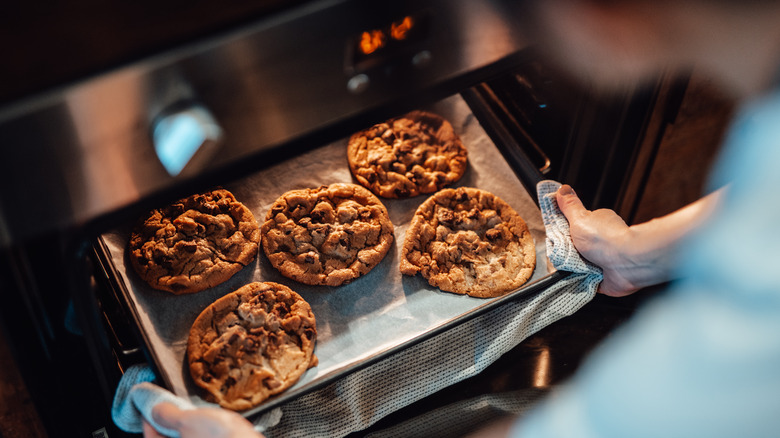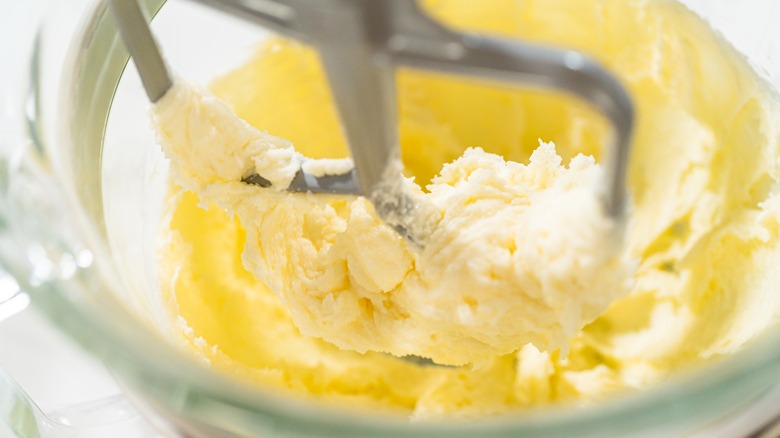The Simple Mistake That's Ruining Your Cookies Every Time
Baking may not be brain surgery, but even a simple batch of cookies can present challenges. Overbaking may be the most obvious way to ruin them (although even then, there may be a way to fix burnt cookies), but there are other rookie cookie mistakes, such as failing to soften your butter. Cookbook author Jerrelle Guy, creator of The Dinner Ritual Substack, told The Takeout that, in her opinion, there's another equally crucial component of cookie creation: creaming. Failing to do this properly will result in cookies that won't turn out as you wish.
"The creaming stage," Guy declared, "is the first important step of cookie-making." When you beat the sugar with the butter, you're not only mixing but aerating the two ingredients. As Guy explained, "Tiny air pockets get incorporated, which helps give cookies a bit of lift and a better texture." If you fail to beat for a sufficient amount of time, though, the ingredients won't be well-blended, which can lead to problems down the line. Guy mentioned dense cookies as one possible outcome and uneven baking as another. As an example of the latter, she said, "Streaks of butter or sugar can cause cookies to spread unpredictably, leaving you with some that are crispy and others that are underbaked."
Proper creaming technique
There's no hard and fast rule for exactly how long to cream the butter and sugar, so you can't set a kitchen timer and expect success every time. Jerrelle Guy pointed out that both the type and speed of the mixer can affect things, as may other factors such as the amounts of butter and sugar, temperature of the butter, and temperature of the room. Generally speaking, two to four minutes ought to do it, but pay attention to visual cues, too. "You're looking for a mixture that's pale in color and fluffy in texture," Guy told us, adding, "If it still looks grainy, keep going." Cookies made with brown sugar are a bit different, though. Not only won't the creamed mixture look pale, but, according to Guy, "It might not look as fluffy as with white sugar." It should, however, become lighter in texture and color the more you beat.
It's important to scrape down the bowl periodically so all of the butter and sugar is mixed in. If you fail to do this, Guy cautioned, "It could lead to cookies that bake inconsistently with uneven texture, like some spreading too much because the streaks of butter are melting unevenly, others staying too thick, or ones where pockets of sugar caramelize and create hard spots in the cookie."
Keep in mind, though, that it's possible to over-cream your butter-sugar mixture. Instead of aerating, you'll be beating all the air out, resulting in cookie dough that's way too dense. It's best not to use that overworked butter and sugar for baking, but save it to melt on pancakes, waffles, and French toast so good you won't even need syrup!

